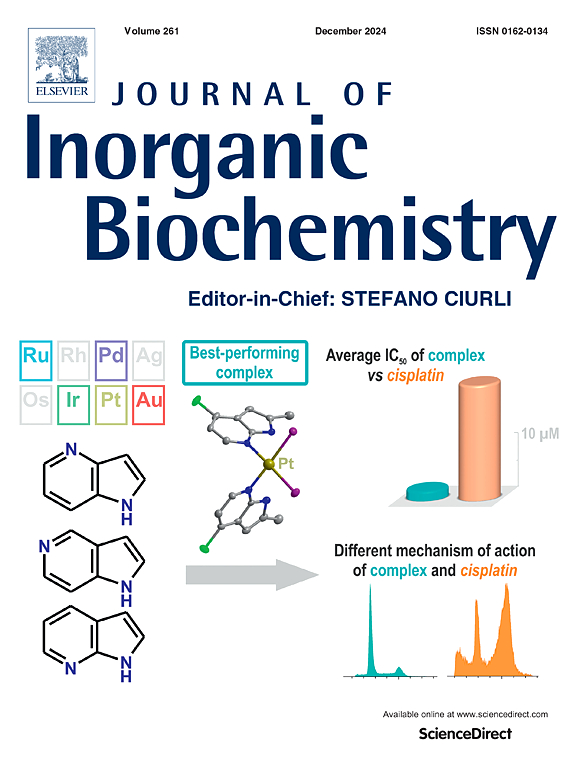Proteomic profiling of parthanatos and the neuroprotective potential of sodium perborate tetrahydrate
IF 3.2
2区 化学
Q2 BIOCHEMISTRY & MOLECULAR BIOLOGY
引用次数: 0
Abstract
Parthanatos is a caspase-independent form of programmed cell death triggered by PARP-1 overactivation and mitochondrial dysfunction, implicated in neurodegenerative diseases. In this study, we performed a proteomic analysis of SH-SY5Y neuronal cells undergoing parthanatos and evaluated the neuroprotective effects of sodium perborate tetrahydrate (SPT), an inorganic boron-containing compound. LC-MS/MS analysis revealed significant alterations in mitochondrial respiration, DNA repair, and inflammatory signaling pathways. Proteins such as MT-CO2, CYC1, POLR2L, and SLC25A5 -implicated in Parkinson's and Huntington's disease pathways- were found to be dysregulated. SPT pre-treatment led to reduced PARP-1 activation, decreased DNA fragmentation, and improved cell viability. These findings suggest that boron-containing inorganics, as metalloids, can modulate molecular targets involved in neuronal survival. Our study contributes novel experimental evidence on the biochemical effects of boron compounds in neurodegenerative processes, complementing current research in metalloid-biomolecule interactions and supporting their potential utility in therapeutic development for neurodegenerative diseases.

parthanatos的蛋白质组学分析和四水过硼酸钠的神经保护潜力
Parthanatos是一种不依赖caspase的程序性细胞死亡形式,由PARP-1过度激活和线粒体功能障碍引发,与神经退行性疾病有关。在这项研究中,我们对SH-SY5Y神经细胞进行了蛋白质组学分析,并评估了四水过硼酸钠(SPT)的神经保护作用,SPT是一种无机含硼化合物。LC-MS/MS分析显示,线粒体呼吸、DNA修复和炎症信号通路发生了显著变化。MT-CO2、CYC1、POLR2L和SLC25A5等与帕金森病和亨廷顿病相关的蛋白质被发现失调。SPT预处理降低了PARP-1的激活,减少了DNA断裂,提高了细胞活力。这些发现表明,含硼无机物,如类金属,可以调节参与神经元存活的分子靶点。我们的研究为硼化合物在神经退行性疾病过程中的生化作用提供了新的实验证据,补充了目前金属-生物分子相互作用的研究,并支持其在神经退行性疾病治疗开发中的潜在应用。
本文章由计算机程序翻译,如有差异,请以英文原文为准。
求助全文
约1分钟内获得全文
求助全文
来源期刊

Journal of Inorganic Biochemistry
生物-生化与分子生物学
CiteScore
7.00
自引率
10.30%
发文量
336
审稿时长
41 days
期刊介绍:
The Journal of Inorganic Biochemistry is an established international forum for research in all aspects of Biological Inorganic Chemistry. Original papers of a high scientific level are published in the form of Articles (full length papers), Short Communications, Focused Reviews and Bioinorganic Methods. Topics include: the chemistry, structure and function of metalloenzymes; the interaction of inorganic ions and molecules with proteins and nucleic acids; the synthesis and properties of coordination complexes of biological interest including both structural and functional model systems; the function of metal- containing systems in the regulation of gene expression; the role of metals in medicine; the application of spectroscopic methods to determine the structure of metallobiomolecules; the preparation and characterization of metal-based biomaterials; and related systems. The emphasis of the Journal is on the structure and mechanism of action of metallobiomolecules.
 求助内容:
求助内容: 应助结果提醒方式:
应助结果提醒方式:


